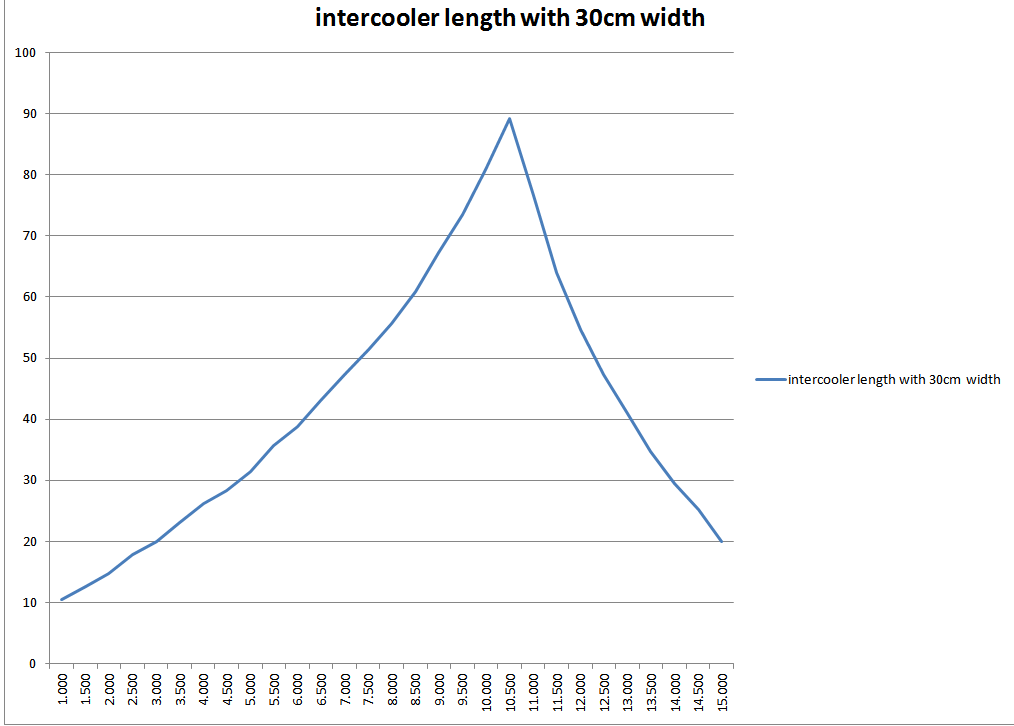I have been investigating the effects of engine load, desired intake air temperature on intercooler sizing.
It's quite interesting that depending on the temperature difference you want across your intercooler, it affects at what engine speeds you will have a greater heat load on the intercooler.
I have included in my engine calculator an intercooler sizer. It uses variables like intercooler material, material thickness, tube spacing, fin spacing, desired width, air speed and cfm to come up with an intercooler length.
You also put in what core thickness you will use.
Any how here is an example:
ideal lenght vs engine speed, under full load.

ambient temp: 15 degrees C
compressor outlet temp: varies
desired inlet temp: 50 degrees C
material: Aluminum
Air flow through side pod: 1200 cfm
number of tubes 50
tube height 0.005m
fin thickness 0.0005m
fin per inch 15
fin spacingm 0.001693333
tube spacing 0.01m
core thickness: 4 inches
From the above, it might make sense to go with the maximum size, as it will still cool sufficiently at less demanding times.
So this example 89cm is the height selected, this occurs at 10,500rpm logically. You can imagine 89cm x 30cm
If that's too big, i can increase core thickness or fool around with tubes and spacing etc. or simply require less of the intake temperatures.
Or i can make the interooler work at more forgiving air speeds. For the cfm above blowing through a 15 inch sidepod hole this is just about 5m/s. So with increased ground speed the size can be smaller. I can't simmulate this however. that would reqire of me to know how fast the cars are.



